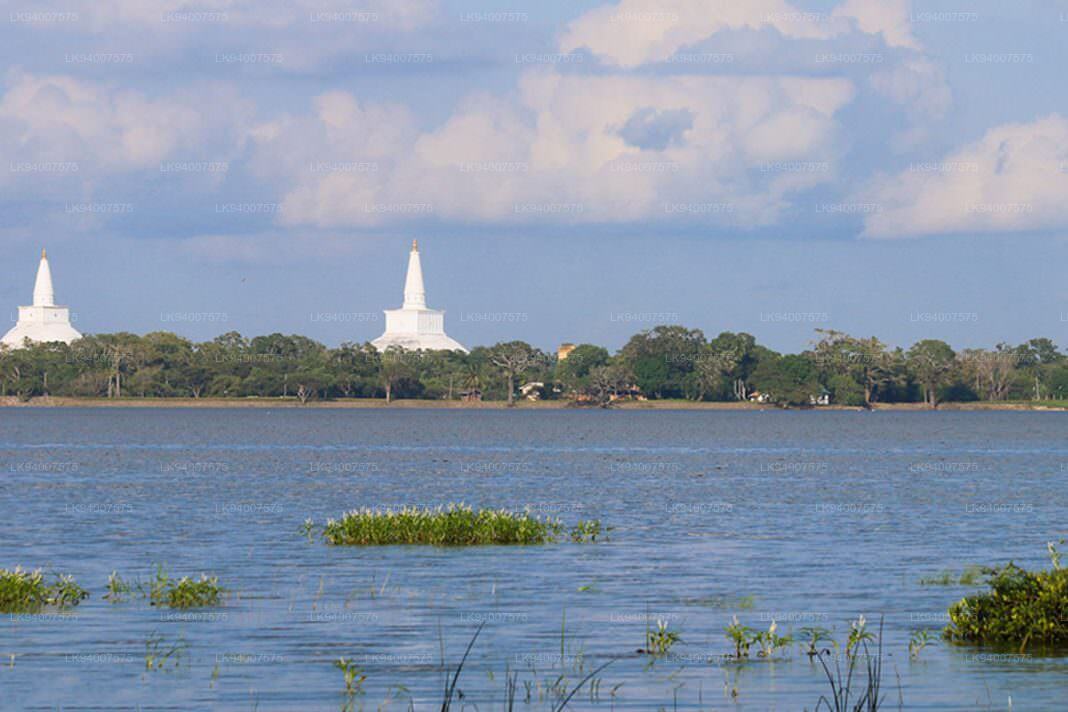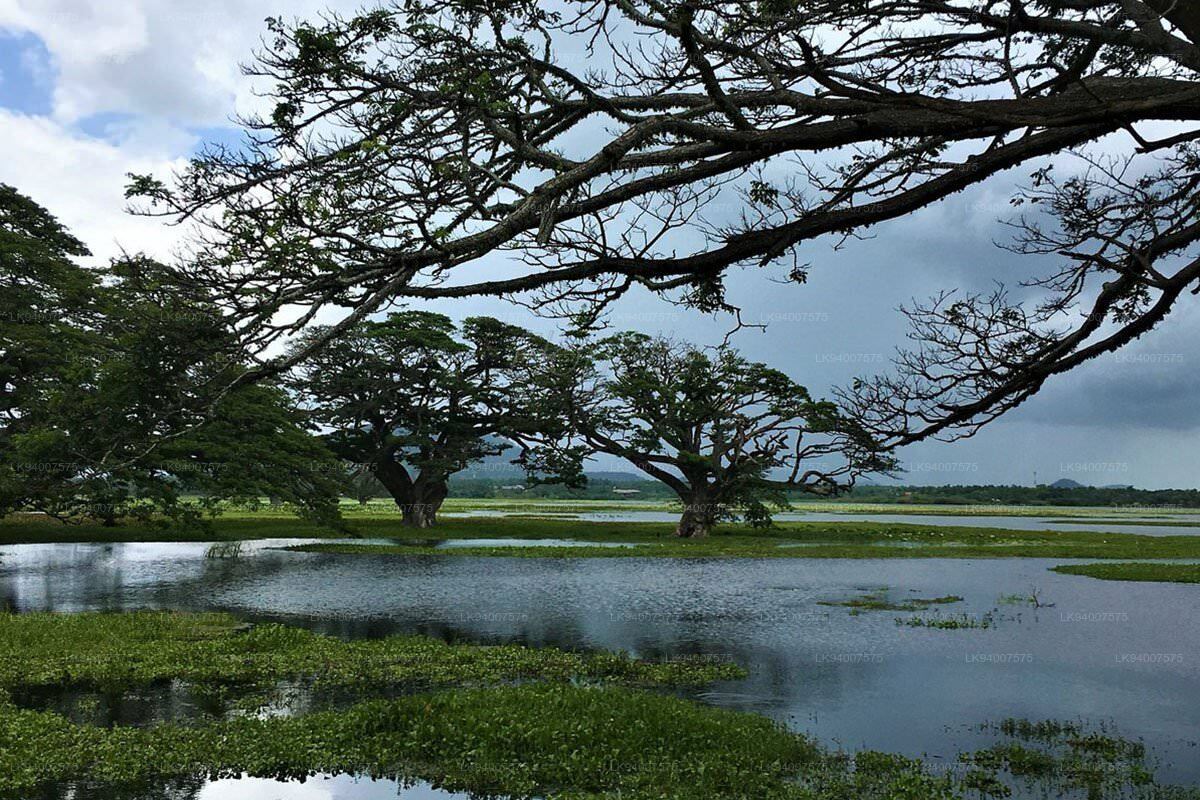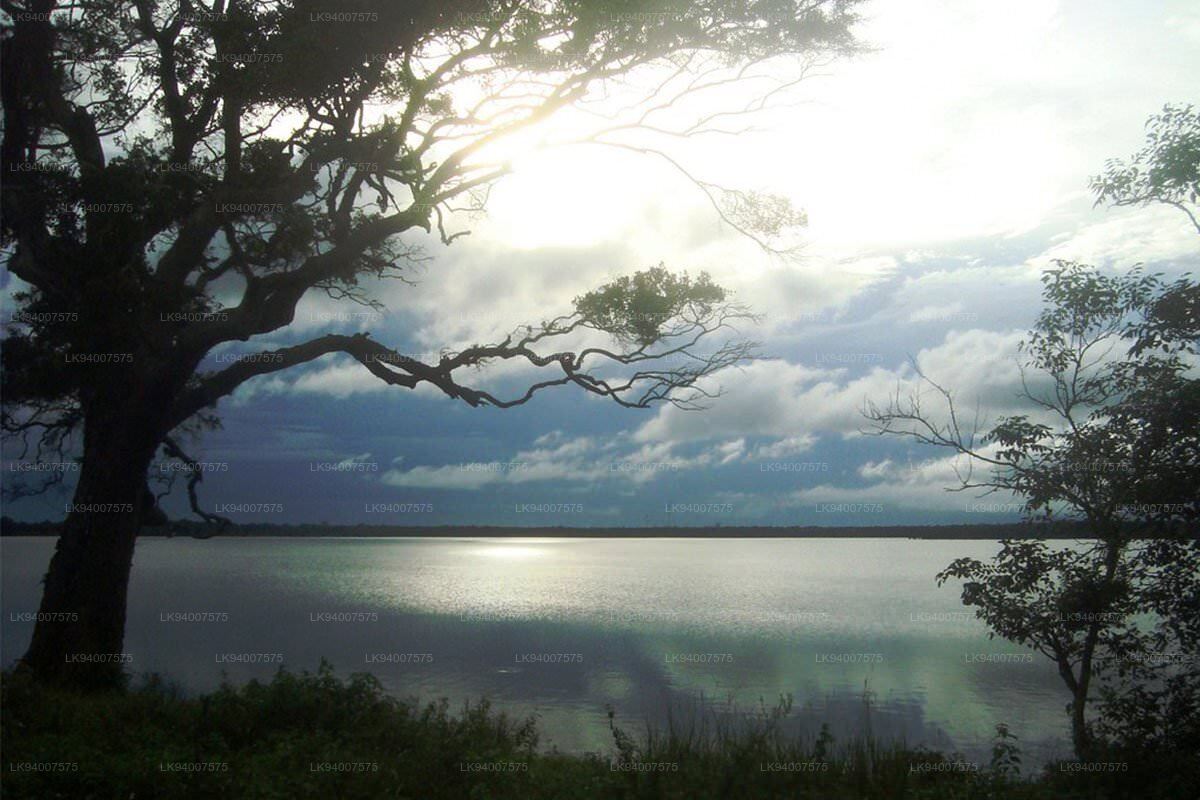
Città di Anuradhapura
Anuradhapura appartiene alla Provincia Centro-Settentrionale dello Sri Lanka. Anuradhapura è una delle antiche capitali dello Sri Lanka, famosa per le sue rovine ben conservate dell'antica civiltà lankese. La città, oggi Patrimonio dell'Umanità UNESCO, si trova 205 km a nord dell'attuale capitale Colombo, in Sri Lanka.
Tissa Wewa (තිස්ස වැව)
Tissa wewa (also known as Tissa Wewa, Tissamaharama Lake, Tissa Wapi) is yet another destination for tourists to gain relaxation and knowledge for both physical and mental. It is a symbol of Ancient Irrigation systems of Sri lanka. And also it is one of the men made reservoirs in Anuradhapura other than Basawakkulama (Abhayagiri wewa) and Nuwara wewa. Only Abhaya wewa and Panda wewa is regarded as older than this. It is built by King Devanam Piyathissa (150-210 B.C), the predecessor of establishing Buddhism in Sri Lankan Civilization in the 3rd century. The bunt is about 11000 feet in distance and 25 feet in depth.Tisa wewa covers an area about 550 acres. Mahawansa reveals that the great King Dutugemunu went to Tissa wewa to make the rituals and observed traditions bounded with water before getting accession to the throne after defeating brutal Dravidian King Elara. The lake is located in the south west of the Anuradhapura city.
This Large irrigation system was fallen into obsolescence. But it was repaired several times even by the British government. As prescribed in H.Parker's reports, he says that the bunt has been built thickly in its original state and It may not need a maintaining. As a matter of fact, The Tissa Wewa still serves the Anuradhapura area. By the way, the Ancient Bisokotuwa made of stones was embedded with concrete. Tissa wewa was nourished with the water gained from Kala wewa. The water was supplied through the Canal, Yodha Ela. Yodha Ela is also a great creation of our ancient architectures. The architects knew that the speed of water in canals may decrease if it is moved into a zigzag shaped canal.
Thereby they used this theory to supply water for low land areas. The canals were capable of covering whole the Dry zone areas in Anuradhapura. They considered of a research to elect a suitable place to built Tissa wewa by King Devanam piya tissa. It was done under several objectives. Congruent Geographical features to imbibe water from the earth, collect and secure water from natural water resources, easier to build the dam of the tank and adjustability to face earthquakes or inundation were thoroughly considered. Thus ancient rural life style of Sri Lankans was deeply attached with watery civilization. Kings paid their utmost attention to maintain and develop the tanks, lakes and water reservoirs. They never let the people waste a single drop of water.
Informazioni sul distretto di Anuradhapura
Anuradhapura appartiene alla Provincia Centro-Settentrionale dello Sri Lanka. Anuradhapura è una delle antiche capitali dello Sri Lanka, famosa per le sue rovine ben conservate dell'antica civiltà cingalese. La città, ora Patrimonio dell'Umanità UNESCO, si trova 205 km a nord dell'attuale capitale Colombo, in Sri Lanka. Nella città sacra di Anuradhapura e nelle sue vicinanze si trovano numerose rovine. Le rovine consistono in tre classi di edifici: dagoba, edifici monastici e pokuna (stagni). La città possedeva alcuni dei sistemi di irrigazione più complessi del mondo antico; situata nella zona arida del paese, l'amministrazione costruì numerose cisterne per irrigare i terreni. La maggior parte dei civili è cingalese, mentre nel distretto vivono anche tamil e mori dello Sri Lanka.
Informazioni sulla provincia centro-settentrionale
La Provincia Centro-Settentrionale, la più grande del paese, copre il 16% della superficie totale del paese. La Provincia Centro-Settentrionale è composta da due distretti chiamati Polonnaruwa e Anuradhapure. Anuradhapura è il distretto più grande dello Sri Lanka. La sua superficie è di 7.128 km². La Provincia Centro-Settentrionale ha numerose potenzialità per gli investitori che desiderano avviare le proprie attività, in particolare nei settori dell'agricoltura, dell'industria agroalimentare e dell'allevamento. Oltre il 65% della popolazione della Provincia Centro-Settentrionale dipende dall'agricoltura di base e dall'industria agroalimentare. La Provincia Centro-Settentrionale è anche chiamata "Wew Bendi Rajje" perché nella provincia si trovano più di 3.000 serbatoi di medie e grandi dimensioni. Sri Maha Bodiya, Ruwanweli Seya, Thuparama Dageba, il monastero di Abayagiri, Polonnaruwa Rankot Wehera e Lankathilake sono luoghi di interesse.

















